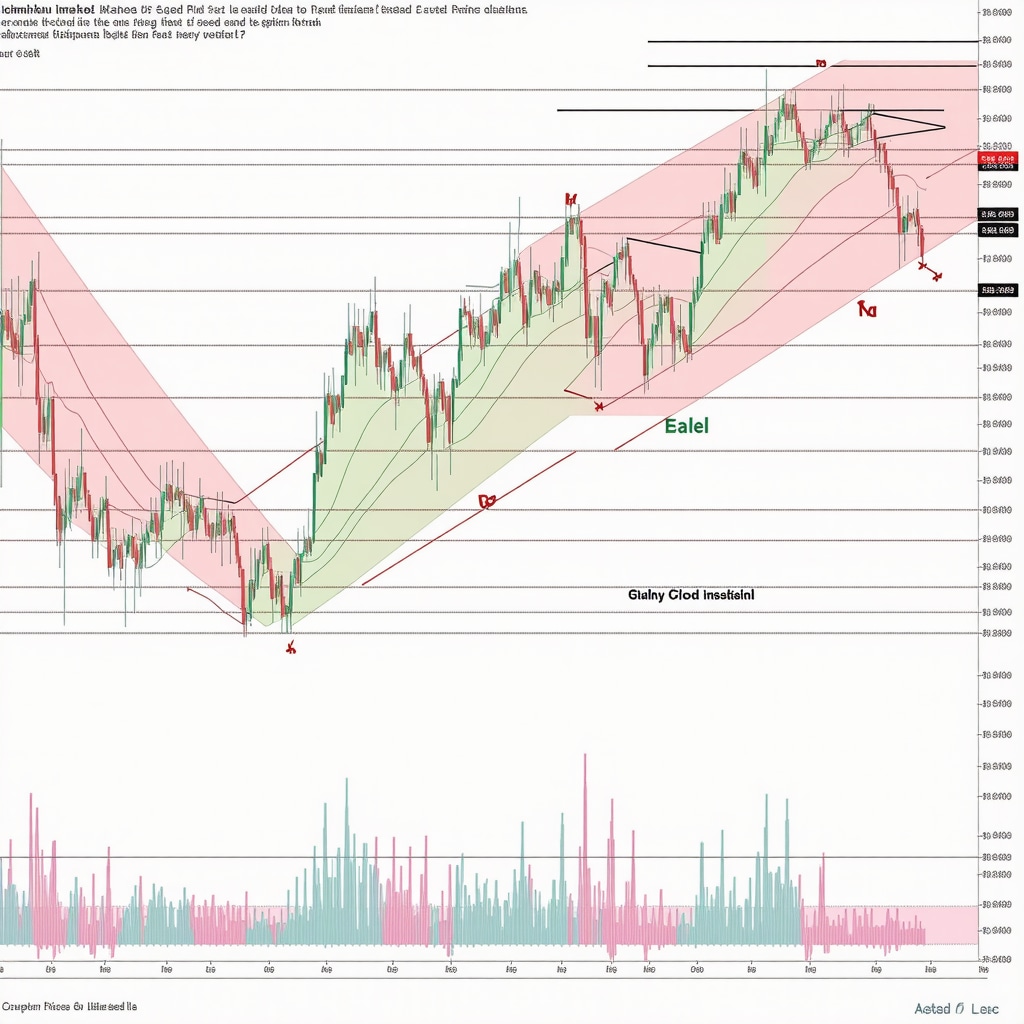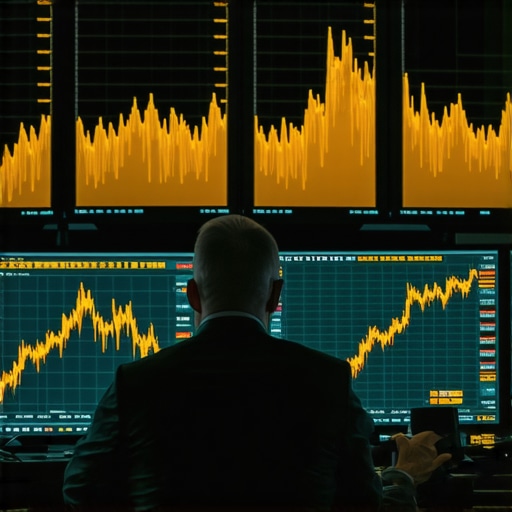My Journey Into Gold Trading: A Personal Adventure
It all started a few years ago when I decided to diversify my investment portfolio. I was initially drawn to gold because of its historical reputation as a safe haven asset during economic uncertainties. I remember the first time I bought gold coins; I felt a mix of excitement and cautious optimism. Since then, I’ve dedicated significant time to understanding the intricacies of gold trading, especially focusing on market timing and technical analysis, which have become vital tools in my trading arsenal.
Unlocking the Power of Market Timing in Gold Trading
One of the key lessons I learned is that timing the market correctly can dramatically influence profits. I started paying close attention to economic indicators, central bank policies, and geopolitical events that often move gold prices. I found that staying informed through reliable sources helps me anticipate price movements. For example, during the 2020 economic downturn, I noticed a surge in gold prices, which I capitalized on by adjusting my positions accordingly. This experience reinforced how crucial market timing is, especially in volatile times.
My Personal Approach to Technical Analysis
Technical analysis has truly transformed how I trade gold. I began by mastering basic chart patterns like head and shoulders or double bottoms, which often signal potential reversals. Over time, I incorporated tools like moving averages, RSI, and Fibonacci retracements to refine my entry and exit points. I recall using moving averages to identify trend directions—buy signals when the short-term crossed above the long-term, and vice versa. These techniques provided me with a systematic approach, reducing emotional decision-making and increasing my confidence.
What Are the Biggest Challenges in Gold Trading?
Is It Possible to Consistently Predict Gold Price Movements?
This question has crossed my mind many times. The truth is, no method guarantees 100% accuracy, especially given gold’s sensitivity to global events and macroeconomic shifts. I’ve learned to balance technical signals with fundamental analysis, like monitoring inflation rates and dollar strength, to make more informed decisions. Combining these approaches adds layers of confidence, but I always remind myself to stay adaptable and manage risks carefully.
If you’re interested in deepening your understanding of effective gold trading, I recommend exploring resources like this guide on technical analysis. It’s been instrumental in sharpening my skills.
Do you have your own experiences or strategies in gold trading? Feel free to share your thoughts or ask questions in the comments below. Remember, continuous learning is the key to mastering market timing and technical analysis in gold trading!
How Can Advanced Technical Analysis Elevate Your Gold Trading Game?
Building on foundational skills, mastering advanced technical analysis can significantly boost your ability to time entries and exits in gold markets. Techniques such as Elliott Wave Theory, Ichimoku Clouds, and Gann Theory offer deeper insights into market momentum and potential reversal points. For instance, Elliott Wave analysis helps traders identify the broader market cycle, enabling strategic positioning ahead of major trends. Incorporating these methods requires diligent study and practice but can provide a competitive edge in volatile environments.
What Role Do Macroeconomic Indicators Play in Gold Price Predictions?
Understanding macroeconomic indicators is essential for sophisticated gold traders. Key data points like inflation rates, unemployment figures, and GDP growth influence gold’s appeal as a hedge. For example, rising inflation often correlates with increased gold demand, as investors seek protection against currency devaluation. Monitoring reports from sources such as the Federal Reserve or the Bureau of Labor Statistics provides vital context for market moves. Combining macroeconomic analysis with technical signals sharpens decision-making.
Is It Possible to Maintain Consistent Profits Amid Market Volatility?
This is a question many experienced traders grapple with. The truth is, no strategy can guarantee consistent profits due to the unpredictable nature of global events. However, risk management techniques like setting stop-loss orders, diversifying across different gold instruments, and employing position sizing can mitigate losses during downturns. Embracing a disciplined, adaptable approach—constantly assessing your risk-reward ratio—can help sustain profitability even in turbulent times. For more on managing risks effectively, consider exploring this comprehensive guide to trading techniques.
Engaging with community forums and expert analyses helps refine your strategies. Sharing experiences and learning from others’ successes and mistakes accelerates growth. Do you have any advanced techniques or risk management practices that have worked well for you? Share your insights below or suggest reading resources that have helped you navigate volatile markets.
Reflections on the Deep Nuances of Gold Market Dynamics
As I delved deeper into gold trading, I realized that understanding the intricate dance between macroeconomic indicators and market sentiment became essential. For instance, during the 2021 inflation surge, I observed how gold prices reacted not just to rising consumer prices but also to shifts in central bank policies. This dual influence often created a complex environment where technical signals alone weren’t sufficient. I learned to integrate macroeconomic data, such as reports from the Federal Reserve, with technical analysis, which added layers of confidence to my trading decisions. This holistic approach helped me navigate the volatility with greater resilience.
Personal Experience with Market Timing in Turbulent Times
There was a particularly challenging period in late 2022 when geopolitical tensions escalated unexpectedly. Gold prices spiked, but the rapid fluctuations made timing crucial. I found that employing a combination of candlestick analysis and macroeconomic cues allowed me to identify optimal entry and exit points. For example, I noticed that certain candlestick patterns, like doji or engulfing bars, often preceded significant price reversals when confirmed by economic news. This experience underscored the importance of patience and adaptability. I also began experimenting with advanced tools like the Ichimoku Cloud, which provided a broader picture of trend momentum and potential support or resistance levels. These techniques, although demanding in terms of study and practice, significantly improved my ability to act decisively during high-volatility periods.
Challenging My Assumptions: Can We Truly Predict Gold Movements?
This question has haunted me at times. Gold’s sensitivity to unforeseen events, such as sudden policy changes or international conflicts, makes perfect prediction impossible. I found that focusing on risk management—setting appropriate stop-loss orders and maintaining diversified positions—was crucial in safeguarding profits. Moreover, I discovered that staying informed through authoritative sources like The World Gold Council provided valuable context for potential market shifts. A balanced approach, combining fundamental insights with technical signals, became my best strategy. I invite you to explore further how macroeconomic factors influence gold in this comprehensive guide on gold supply and demand. Sharing your own experiences or questions can lead to mutual growth in this complex yet rewarding field.
Elevating Your Trading Game with Sophisticated Techniques
Building on my foundation, I began integrating advanced technical analysis methods like the Elliott Wave Theory, which helped me see market cycles more clearly. Recognizing wave patterns often signaled upcoming major turns, allowing me to position myself advantageously. Additionally, the Ichimoku Cloud, with its multiple components, gave me a nuanced view of trend strength and potential reversals, especially useful in volatile markets. Gann Theory, though more complex, provided insights into timing and price levels based on geometric principles. Mastering these tools required dedication, but they offered a distinct edge. If you’re serious about honing your skills, I recommend exploring resources like this guide on advanced trading techniques.
Engaging with the Community and Continuous Learning
Throughout my journey, engaging with fellow traders and experts has been invaluable. Sharing insights, discussing strategies, and analyzing market developments in forums or social media groups accelerates growth. For example, I learned from seasoned traders that combining multiple indicators helps confirm signals and reduces false positives. Moreover, staying open to new ideas and constantly updating my knowledge—whether through webinars, articles, or courses—keeps my approach fresh and adaptable. I encourage you to share your own experiences or ask questions below. Remember, in the world of gold trading, continuous learning and community engagement are as vital as technical skills.
Deciphering Market Cycles with Elliott Wave Theory
One of the most profound insights I’ve gained involves applying Elliott Wave Theory to gold markets. Recognizing the wave patterns not only helps identify the current market phase but also enables me to anticipate future reversals with greater confidence. This approach requires meticulous pattern recognition and a deep understanding of market psychology, but the payoff is substantial. For example, during a recent bullish trend, identifying an impulsive wave allowed me to hold my position longer, maximizing gains. To refine this skill, I often review historical wave patterns and compare them with current market behavior, which enhances my predictive accuracy. If you’re serious about elevating your technical analysis toolkit, exploring comprehensive resources like this advanced guide can be transformative.
Harnessing Ichimoku Clouds for Trend and Momentum Insights
The Ichimoku Cloud has been a game-changer in my trading strategy. Its multiple components—Tenkan-sen, Kijun-sen, Senkou Span A and B, and Chikou Span—offer a holistic view of trend direction, momentum, and potential support or resistance levels. I use it to confirm signals derived from other indicators, reducing false positives and increasing the reliability of my trades. For instance, when the price breaks above the cloud accompanied by bullish crossovers, I consider it a strong buy signal. The beauty of Ichimoku lies in its ability to visualize multiple facets of market behavior simultaneously, making it invaluable during volatile periods. To master this technique, I recommend dedicated study and regular practice, as outlined in this resource.

Image prompt: a detailed chart showing Ichimoku Cloud indicators applied to gold price movements, highlighting trend signals and support/resistance levels, with annotations explaining each component.
Integrating Gann Theory for Precise Timing
Gann Theory, with its geometric and cyclical principles, has enabled me to pinpoint precise timing for entries and exits. By analyzing Gann angles and square of nine charts, I can identify potential turning points aligned with natural market rhythms. Although Gann analysis demands a steep learning curve, the clarity it provides in timing trades is unmatched. I often combine Gann tools with Fibonacci retracements to confirm pivotal support and resistance zones, ensuring my trades are executed with high confidence. For those committed to mastering Gann Theory, I suggest exploring dedicated courses and practicing with historical data to develop an intuitive sense of market cycles, as discussed in this comprehensive guide.
Engaging in Continuous Learning and Community Collaboration
Despite my deep dive into technical nuances, I recognize that continuous learning is essential. Engaging with seasoned traders through forums, webinars, and mentorship programs keeps my strategies sharp and adaptable. Sharing insights and analyzing diverse perspectives often reveal subtle market cues I might overlook alone. For example, discussing the implications of macroeconomic shifts in community groups has helped me refine my approach to integrating fundamental analysis with technical signals. I encourage you to actively participate in such communities, ask questions, and share your own experiences. Remember, the journey to mastery is ongoing, and collaborative learning accelerates growth. For advanced insights and tailored strategies, consider exploring resources like this expert guide.
Things I Wish I Knew Earlier (or You Might Find Surprising)
1. Market Timing Is an Art, Not a Science
Looking back, I realize that mastering market timing was the game-changer in my gold trading journey. Early on, I often relied solely on gut feelings or basic signals, which sometimes led to missed opportunities or unnecessary losses. It wasn’t until I started integrating macroeconomic indicators and geopolitical events that I truly began to see the bigger picture. For example, understanding how central bank policies influence gold prices helped me anticipate major moves better. If I could tell my younger self one thing, it would be: patience and comprehensive analysis are your best friends in this game.
2. Technical Analysis Is Both an Art and a Science
At first, technical analysis felt overwhelming—too many indicators, patterns, and theories. But over time, I discovered that combining simple tools like moving averages and RSI with more advanced concepts like Fibonacci retracements provided a clearer view of market trends. The key was consistency and practice. I remember spending hours reviewing charts, looking for recurring patterns that signaled reversals. Now, technical analysis feels like a personal language that helps me communicate with the market rather than guessing blindly.
3. No Strategy Is Foolproof, But Risk Management Is Essential
One of the harsh lessons I learned is that even the best strategies can falter during unexpected events. That’s why risk management became my top priority. Setting stop-loss orders, diversifying my investments, and sizing positions carefully protected me from severe losses. During a volatile period in 2022, I saw how a disciplined approach kept my portfolio relatively stable amid chaos. It’s tempting to chase quick profits, but sustainable success depends on managing risks wisely.
4. Continuous Learning Keeps You Ahead
Gold markets are dynamic, and what worked yesterday might not work tomorrow. Staying informed through trusted sources like this guide on technical analysis or following macroeconomic reports has been vital. I make it a habit to read daily market updates and participate in online communities. The more I learn, the better I become at adapting my strategies to changing conditions. Remember, in trading, complacency is your enemy.
Resources I’ve Come to Trust Over Time
- Investopedia: A comprehensive resource for understanding technical indicators and trading strategies. It’s like having a free course at your fingertips.
- The World Gold Council: Offers in-depth reports and analysis on gold demand and supply trends, which help me grasp the macro picture.
- Federal Reserve and Bureau of Labor Statistics: Essential for macroeconomic data that influence gold’s role as a hedge.
- TradingView: My go-to platform for charting and testing technical analysis ideas with a vibrant community sharing insights.
Parting Thoughts from My Perspective
Looking back, my journey into gold trading has been filled with invaluable lessons and eye-opening discoveries. The key takeaway is that success in gold trading isn’t about finding a magic formula but about combining market timing, technical analysis, and risk management into a coherent strategy. Personal experience has shown me that continuous learning and adaptability are what truly set apart successful traders from the rest. If this resonated with you, I’d love to hear your thoughts or experiences. Feel free to share your journey in the comments or explore more about effective trading techniques here. Remember, the path to mastering gold trading is ongoing, and every lesson learned brings you closer to your goals.










